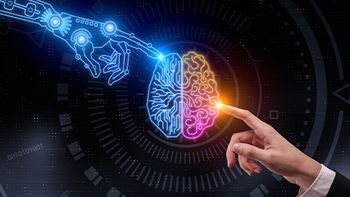There is no doubt the AI has been a buzzword here at LogiPharma USA, and for good reason.
It’s being implemented in daily supply chain operations among other uses, but it’s also important to note that maintaining the human connection is just as valuable. In a morning keynote during day 3 of the conference, Luiz Barberini, Bayer’s operations manager, external manufacturing, Latin America, presented on “Relationship Management and the AI Inclusion: The Human Factor.”1
Bayer’s goals for AI integration in supply chain management
The main goals of Barberini’s presentation was to:
- Provide a status as to where Bayer is at in terms of integrating AI into supply chain processes
- Share strategies that the company uses to maintain transparency, trust, and collaboration with external partners in an AI-enhanced ecosystem
- Outline the role of human interaction and communication
- Offer tips on improving supplier performance
For context, Bayer has over 6,000 products, and eight Latin American suppliers that contributed $30 million to the market. 1.6 billion individuals use the company’s products on a daily basis. It’s powered by four main pillars:
- People and culture
- Customer value
- Customer trust
- Competitiveness
Even beyond those pillars, proper management of networks, suppliers, and our partners is also critical.
Fast facts
- 6,000+ products in Bayer’s global portfolio
- 1.6 billion people use Bayer products daily
- Four pillars of strategy: People & culture, customer value, customer trust, competitiveness
- Digital roadmap focus: Virtual connect, visibility, automation, advanced automation
- AI insight: “Supply chain is about people, process, and technology” — Luiz Barberini
Digital culture as the foundation of AI adoption
From a technology aspect, Bayer has created a complex road map—featuring virtual connect, visibility, automation, and advanced automation—but Barberini argued that digital culture is the headliner.
“One of the most important things that we have here is the digital culture. We have to change our culture into something digital,” he said. “We have to change the way we think, our processes, our methodologies, and the way that we do our business. If you don't start thinking like that, things are not going to work.”
Steps toward digital transformation in pharma supply chains
In order to get to that point, there are certain steps that ought to be followed including:
- Digitization: A concept dating back to 1947 that involves making information available via digital format (from analog to digital)
- Digitalization: Thinking about how to best apply digitized info to simplify operations
- Digital transformation: Powered by a process of creating new business applications that integrate all the digitized data, along with digitalized applications.
“We have a lot of things to consider when talking about artificial intelligence, so it's not one tool that can be used for everything,” Barberini explained. “We must understand what it can give us in terms of how to manage our processes and our people. Remember, supply chain is about people, process and technology.”
Why human relationships still matter in the age of AI
It’s all about establishing, building, and maintaining relationships with suppliers, while also incorporating the human/personal touch. After all, trust—with the help of proper communication—is something that is built up with the help of transparency, honesty and sincere collaboration.
“We need to have a relationship with our suppliers, within our companies, while also considering the human aspect. We have to view the relationship with our suppliers and with our other companies, he added.”
This is indeed a challenge but one I think pharma stakeholders will be up for.
Reference
1. Barberini L. Relationship Management and the AI Inclusion: The Human Factor. October 1, 2025. LogiPharma USA 2025. Boston.






